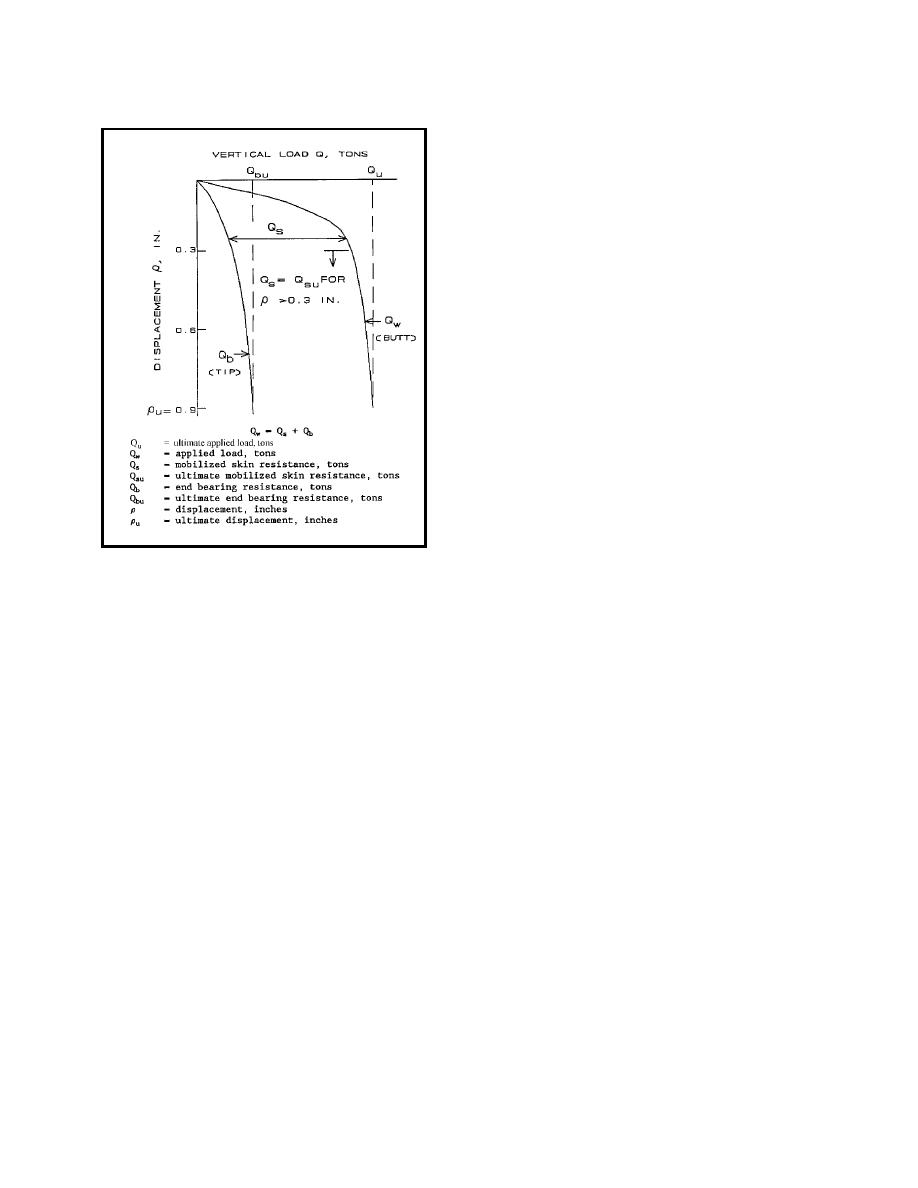
EI 02C097
01 Jul 97
and battering piles in a pile group. Batter piles are efficient n
i
resistinglateral lo ds but significantly reduce ductility of the pile group
a
in the lateral direction, resulting in a brittle failure. Vertical pile,s
though less efficient in resisting lateral loads, are also less stiff and do
not fail suddenly. These conlicting characteristics need to be balanced
f
in design, and they are considered critical where seismic or dynami
c
lateral loads are involved.
c. Applications. Driven pile groups are typicallyused by th
e
Corps of Engineers to support locks, dry docks, and other facilitis
e
constructed in river systems, lakes, lagoons, and other offshoe
r
applications. Drilled shafts typically support many permanent onshore
structures such as administraive buildings, warehouses, dormitories, and
t
clinics. Drilled shafts are divided into two groups: displacement and
nondisplacement.
(1) Displacement. Dri en pile foundations are usually preferable
v
in loose, cohesionless, and soft soils, especially where excavatios
n
cannot support fluid concrete and where the depth of the bearig
n
stratum is uncertain. Groundwater conditions can be a deciding factor
in the selection of driven piles rather than drilled shafts. Uncasd
e
shafts are generally excludedfrom consideration where artesian pressures
are present. Often more than one type of driven pile may meet al
l
requirements for a particular structure. Driven piles according to thei
r
application are presented in Figure 1-6.
Figure 1-5. Axial-load deflection relationship
(a) Figures 1-6a and 1-6b illustratepiles classified according to their
behavior as end-bearing or friction piles. A pile embedded a significat
n
length into stiff clays, silts, and dense sands without significant end bearing
resistance is usually a friction pile. A pile driven through relatively weak or
compressible soil to an underlying stronger soil or rock is usually n
a
end-bearing pile.
(b) Piles designed primarly to resist upward forces are uplift or tension
i
piles (Figure 1-6c), and the resistane to the upward force is by a combination
c
of side (skin) friction and self weight of the pile.
(c) Lateral forces are r sisted either by vertical piles in bending (Figure
e
1-6d) or by batter piles or groups of vertical and batter piles (Figure 1-6e).
(d) Piles are used to transfer lo ds from above water structures to below
a
the scour depth (Figure1-6f). Piles are also used to support structures that
may be endangered b future adjacent excavations (Figure1-6g). In order to
y
prevent undesirable movements of structures on shrink/swell soils, a pel
i
anchored as shown in Figure 1-6h can be used.
(2) Nondisplacement. Drilled shafts are especially suitable fr
o
supporting large coumn loads of multistory structures and bridge abutments
l
or piers. They are suitable for resisting large axial loads and lateral loas
d
applied to the shaft butt (top or head) resulting fromwind forces; these are
also used for resisting uplif thrust applied to the shaft perimeter through soil-
t
shaft interface friction and from heave of expansive soil. Figure 1-
7
illustrates exampe load ranges for drilled shafts in different soils. The loads
l
shown are for guidance only and can vary widely from site to sit.e
Cylindrical shaftsare usually preferred to underreamed ones because of ease
1-10



 Previous Page
Previous Page
